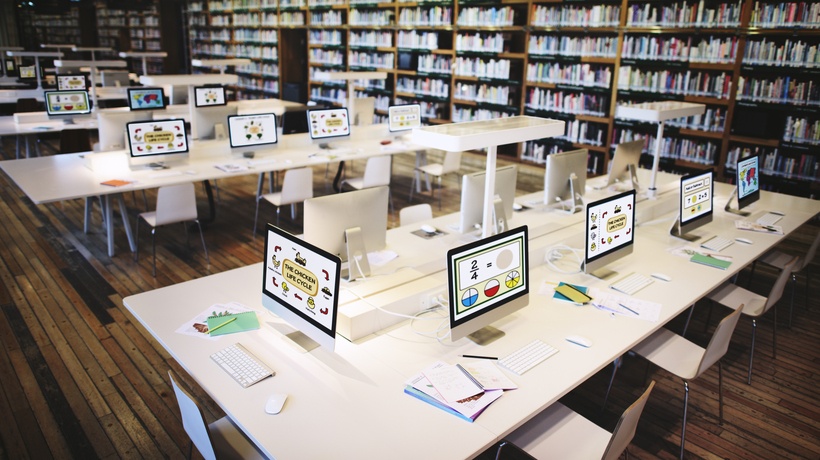Reflection on Infinite Learning: Library as Classroom

The Library is an Evolving Classroom
The library serves not just as an institution for the long-term storage of texts and objects, but also as an ever-evolving landscape of pedagogy for its surrounding community (Stephens, 2016). Libraries serve this purpose by not only providing various services and programs to support the learning of the community surrounding a library, but also by enabling an interactive, imaginative learning environment for patrons (Nygren, 2014; Stephens, 2016). Those who doubt the effectiveness of the library as a classroom environment can be persuaded by the enjoyment, interactivity, and adequacy of the library as a classroom (Block, 2014; Lippincott, 2015). The library as classroom also allows librarians to develop a range of soft skills, such as communication and reference services, within learning environments focused on digital skills and related areas (Kenney, 2015; Park, 2016; Stephens, 2025). The idea of a library as a learning ecosystem is necessary for the continued sustainability of youths into the future due to continued reliance on digital technologies, the internet, and the rampant need for classes to be more enjoyable experiences for learners (Bookey & Zoobean, 2015; Nygren, 2014; Park, 2016). Without this kind of change and integration of interactivity and digital landscape learning services, reference desks and libraries as a whole will continue to be seen as underdeveloped relics of the past (Kenney, 2015).
How the Library Can Continue to Evolve
There are several methods a library can use to integrate various technologies and policies into its space to increase its viability as a learning environment (Stephens, 2025). One way to increase the library’s viability as a learning environment is to encourage creativity through reward systems and gamified learning, such as digital badges (Nygren, 2014). Another method, when partnering with other organizations, is to showcase technologies at libraries during gatherings and conventions through mobile exhibits (Bookey & Zoobean, 2015). One more policy that could enhance the library’s viability as a place of learning, like a classroom, is collaboration among libraries to promote learning opportunities for low-income individuals (Breeding, 2019; Nygren, 2014). These are only some of the many ways to integrate various policies and technological advances to improve the library’s learning environment, as more innovative approaches include sharing personal stories digitally and hearing from community voices (Eberhart, 2018; Nygren, 2014; Stephens, 2014).

References
Block, J. (2014, January 7). Embracing messy learning. Edutopia. https://www.edutopia.org/blog/embracing-messy-learning-joshua-block
Bookey, J. L., & Zoobean, C.-F. at. (2015, April 29). 8 awesome ways libraries are making learning fun. HuffPost. https://www.huffpost.com/entry/8-awesome-ways-libraries-_b_7157462
Breeding, M. (2019). Public libraries are teaming up to prepare middle schoolers for 21st century careers and increase access to STEM learning opportunities. Urban Libraries Council. https://librarytechnology.org/pr/24146
Eberhart, G. M. (2018, February 10). Sharing people’s stories. American Libraries Magazine. https://americanlibrariesmagazine.org/blogs/the-scoop/sharing-peoples-stories/
Kenney, B. (2015, September 11). Where reference fits in the modern library. Publishers Weekly. https://www.publishersweekly.com/pw/by-topic/industry-news/libraries/article/60780-the-user-is-still-not-broken.html
Lippincott, J. K. (2015, February 26). The future for teaching and learning. American Libraries Magazine. https://americanlibrariesmagazine.org/2015/02/26/the-future-for-teaching-and-learning/
Nygren, Å. (2014). The public library as a community hub for connected learning. Stockholm Public Library, Digital Library Dept. https://repository.ifla.org/handle/20.500.14598/5386
Park, Y. (2016, June 16). 8 digital skills we must teach our children. Medium. https://medium.com/world-economic-forum/8-digital-skills-we-must-teach-our-children-f37853d7221e
Stephens, M. (2014, November 26). Making the case for the library as a space for infinite learning. State Library of Queensland.
Stephens, M. (2016). The Heart of librarianship: Attentive, positive, and purposeful change. ALA Editions.
Stephens, M. (Director). (2025, November 10). Hyperlinked library: Library as classroom [Video recording]. Panopto. https://sjsu-ischool.hosted.panopto.com/Panopto/Pages/Viewer.aspx?id=c716d09f-f8cf-4a08-bef8-af34011f855e
One Comment
Camillia T
Hi Miguel,
I always get excited when different library systems partner with each other and other organizations for the purpose of educating the public. Library systems should not attempt to compete with one another. When I enter different libraries it always bothers me when the clerk tells me that this library system is better than the other because they open on Sundays to the public or their transit system is much faster and more efficient that another library. In my experience, all libraries want to educate the public and encourage learning and literacy within their communities. Therefore, they need to focus on those similarities and work together to make the community stronger and better.